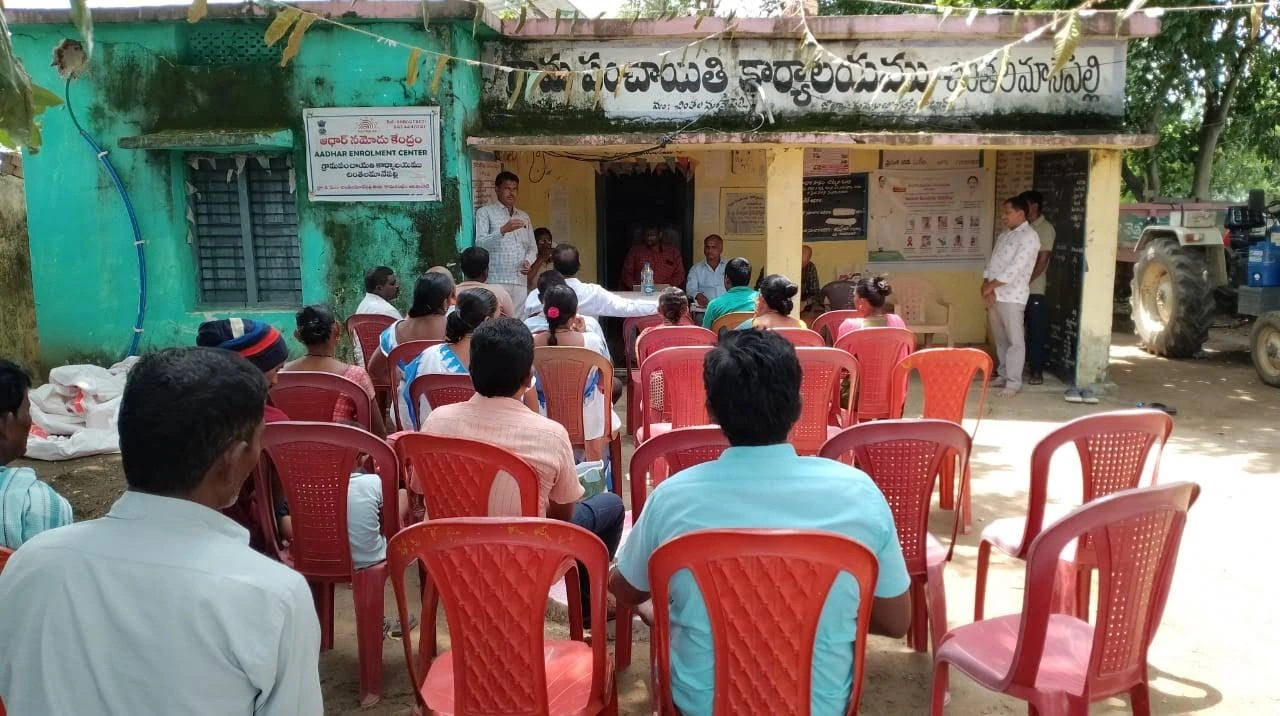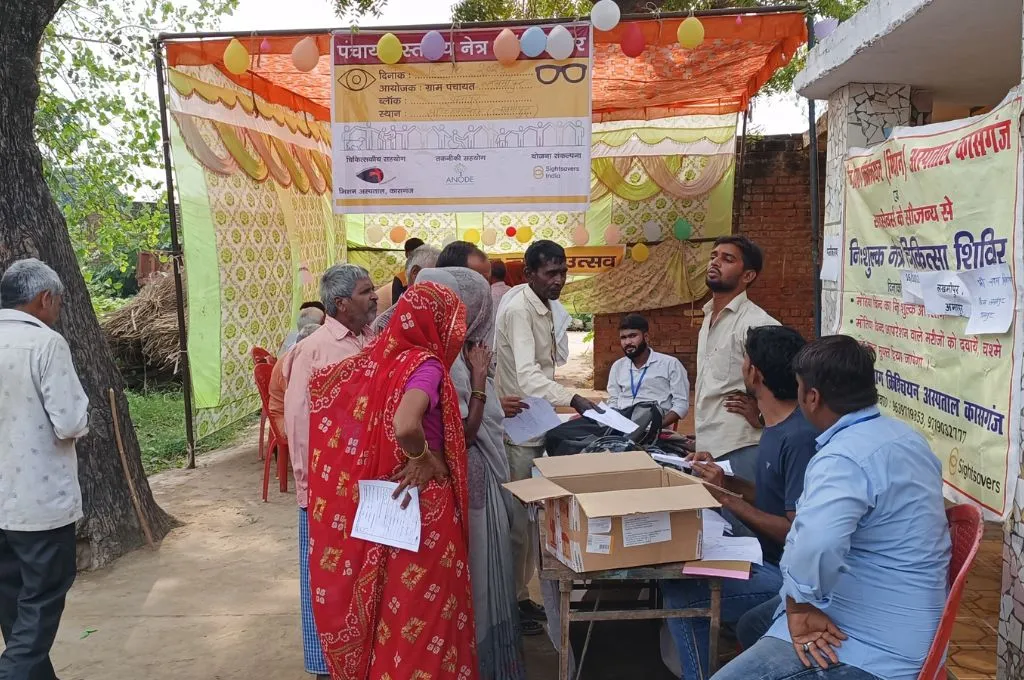Dr Pankaj Chaturvedi, a head and neck cancer surgeon, specialist from Tata Memorial Hospital, and among India’s most resolute anti-tobacco activists, has been fighting for the control, regulation, and prohibition of tobacco products for more than eight years.
Going up against the tobacco industry is no small feat, but Dr Chaturvedi’s efforts have been instrumental in the control and usage of tobacco. His powerful campaigns—for example, Voice of Tobacco Victims—have been pivotal to attaining an all-India ban on gutka and paan masala, along with other regulatory measures.
We had a chance to sit down and talk to Dr Chaturvedi about his unique brand of guerrilla advocacy, which holds important lessons for civil society and what it takes to drive change at a policy level.
Your methods of advocating against tobacco are quite different from the way people usually go about advocacy. Can you tell us more about your approach?
When you are going up against a giant, there is no point in attacking the issue head on. We learnt this in the beginning itself: it’s better to fight smaller battles, and get smaller wins.
The most straightforward way to bring about stricter regulation of tobacco products would have been to try and amend the Cigarette and Other Tobacco Products Act (COTPA). But the tobacco lobby knows this, and thus always has an eye on COTPA. What we decided to do instead was to find loopholes through other laws, and bring about change by amending those laws.
Related article: The 3Ps of working with the government
One of the clauses in COTPA—which is rarely enforced—says that if someone is smoking in a public place, the incident has to be reported to the nearest police station. Now, say you walk to the police station, report the violation, and then bring the police back to the scene, it is unlikely that the person smoking is still going to be there. And even if they are caught smoking, it’s only an INR 200 fine—the amount isn’t big enough to be a deterrent for the offender, nor is it incentive enough for the police to come all the way for a ‘low-value’ misdemeanour.
However, since the tobacco lobby won’t allow COTPA to be changed, we looked at the local municipal laws instead. In all cities, there are general conditions that public eateries and restaurants must comply with in order to obtain their licenses. We added a clause to these general conditions stating that smoking in public places is prohibited.
If these establishments had to retain their licenses to operate—a business risk far greater than having to pay an INR 200 fine—the onus of enforcing the prohibition of smoking in public places would now fall on the establishment’s manager and not on the individual smoking. With one single step, we were able to enforce prohibition of smoking in public places.
Similarly, we went down several other avenues that indirectly affected tobacco laws. For example, through the Weights and Measures Act, we managed to get the sale of loose cigarettes prohibited. Through the Ministry of Women and Child Development, we inserted tobacco to Section 77 of the Juvenile Justice Act 2015 which prohibits the sale of alcohol and narcotic drugs to children. We also approached the Ministry of Information and Broadcasting, who directed us to the censor board, and now in every cinema hall there are warnings against smoking and tobacco use.

Instead of going up against the tobacco industry directly, we found subversive ways to weaken their hold. | Picture courtesy: Flickr
The one thing we learned during this process was that while it’s hard to add clauses into existing laws, it is almost impossible to have them removed. So, once we got these amendments added, even lobbies as powerful as tobacco and gutka were not able to take them out.
All these small victories added up, and made us feel bold—which led us to make a big move—we took on ITC, India’s largest manufacturer and seller of tobacco products and filed a PIL against them.
Seventy-five percent of their profits come from the sale of cigarettes, and we thought we would be able to curb this by filing a PIL on the grounds that the ITC is in violation of COTPA and other laws. But ITC was well-prepared—they had the country’s top paid lawyers in their corner, and fought our accusations relentlessly. Taking them head-on made us realise how poorly resourced we are for such battles.
You’re responsible for the anti-smoking ads we see before movies, and for the warning labels on cigarette packs. How do you decide on what messaging to use? And who is your target audience?
Awareness means telling you that tobacco causes cancer. But everyone already knows this. But what awakens you? What brings you to action? Something that hits you very hard. What we really had to do, was shake people up; we had to ‘awaken’ them. Only then would they really consider quitting, or getting their loved ones to quit. And a graphic, disturbing clip does exactly that.
We used the testimonial approach paired with hard-hitting visuals, to show people what tobacco could really do. Our clips are screened on TV and in movie theatres, and the fact that people cover their eyes and cringe when our clips are shown is testament to the fact that these clips have an impact.
We noticed that rather than targeting smokers themselves, targeting their loved ones was more effective.
In a typical cinema hall, there are various demographics that one needs to target at the same time. We needed something that would transcend barriers like age and gender, and impact everyone. If we had to just target young men, for example, we could talk about the link between tobacco and impotence—but that wouldn’t work for women or the elderly.
We noticed that rather than targeting smokers themselves, targeting their loved ones was more effective. We wanted to empower the non-smoker; the wife or child of a smoker, for example, could exhort them to stop if they were shown the real consequences of tobacco.
When we realised the power of stories, we made tobacco victims the face of our campaign. Our most innovative and successful campaigns was the ‘Voices of Tobacco Victims’. We converted a public health issue into a political issue—a women’s empowerment issue, a child rights issue, a human rights issue. Here is an industry that kills you for profit.
Once you see tobacco victims, their families, and the suffering, then you see the human aspect of the revenue that tobacco brings, which is often a counterpoint to any anti-tobacco campaign.
Nobody cares about the millions of people who die, but when the story is about this one lady, who lost her husband to tobacco use, people pay attention. She is the most powerful advocate against tobacco, not me. When she says that she lost her husband because of systemic failure, and goes in front of a policymaker and says ‘my husband died because of your inaction’, it’s bound to stir them into action.
Related article: The government as a partner—Making it work
A large part of the social sector is about advocacy and trying to get policies changed—what are some lessons that we can learn from your experiences with both?
The most important thing is to know your subject well. Do your own research. If you are campaigning against something, first check–is there any evidence in any part of the world where it has demonstrated some benefit? have people before you tried to fight for the same thing? Can you learn from their mistakes? And lastly, think about your ask–is it implementable?
This is crucial. There’s no point going to the Ministry of Health and talking about tax. Or going to the Ministry of Finance and telling them about the effects of tobacco on health. Identifying the right stakeholder, and sufficiently researching them is paramount. Understand the personality and the motivations of the bureaucrat and minister you will be working with, so that when you meet them, you can hit the right chord.
If you are not able to connect with a person within the first 30 seconds, you are in trouble. Advocacy often calls for meetings with policymakers—who often have four phones ringing simultaneously, people walking in and out, and other distractions. To get them to engage with you, and quickly at that, you have to keep their attention on you.
If you go into a meeting with ten different asks, the person you are talking to will most likely latch onto the one that is most suited to them and politically easy to implement; it may not however be the one with the most impact. Therefore, don’t ask for several small things—have just one ask, but make sure it is the biggest.
If this is the last meeting, you are not a good advocate. You have to create an atmosphere where the person wants to keep in touch with you, have a larger conversation. Keeping the door open for more meetings is an essential part of advocacy.
Whether it’s a personal assistant, executive assistant, or right-hand man, ensuring you have a connection or relationship with this person means you have a contact for future developments.
When it comes to advocacy, the initial meeting is only 10 percent of the work. 90 percent is follow up. Everything that we have managed to do required at least a year’s worth of complicated follow up. After a meeting, make sure you have a way of contacting them, because especially when it comes to policymakers, you will need to constantly follow up with them.
The over-arching aim of our advocacy efforts is to make it unattractive for tobacco companies to invest and do business in India. We’re currently trying to get tobacco products into a higher tax bracket within the GST Act. Along with disincentivising sales, we want to create an atmosphere that when companies analyse and assess the costs of doing business in India, entering the market won’t be worthwhile.
Smarinita Shetty contributed to this article.






